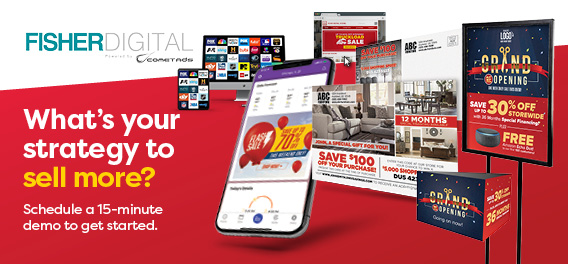Unpacking Popular Food & Beverage Trends
October 29, 2018How disruptive are food and beverage subscription services to the grocery industry? Has online grocery shopping caught on yet? What compels shoppers to select specific food and beverage products?
The Consumer Trends in the Food and Beverage study from Morning Consult released earlier this year examines food and beverage trends, taking a close look at online vs. in-store shopping, purchase considerations and product labels. We will unpack data from these trends in this article.
Online vs. In-Store Shopping
90% of Americans are satisfied with the grocery options near them, but do they like grocery shopping?
Online consumers enjoy it more than customers who shop in a physical store. 74% of consumers who bought groceries online say they enjoy it and 65% of consumers who never bought groceries online say they enjoy shopping.
For most shoppers, online grocery shopping is replacing in-between stock up store visits. 62% of consumers buy small amounts of items as-needed when they buy products online. 27% buy a week’s worth of groceries when they shop online and 11% buy groceries online in bulk.
Most adults have not bought their groceries online and 65% of consumers who say they’ve never purchased food or beverage products online say they have no plans to do so in the future.
The top barriers to buying food or beverages online include:
• 65% prefer to purchase in-person
• 12% convenience
• 14% not sure of the best online retailer to use
One in 3 adults have bought their groceries online. The top 3 reasons they cite for doing so are:
• 47% convenience
• 23% options
• 18% cost
Who is buying food or beverages online?
• 38% males
• 29% females
• 29% income under $50,000
• 38% income $50,000-$100,000
• 45% income over $100,000
• 36% urban
• 34% suburban
• 31% rural
Delivery fees are definite issue among consumers. 51% of Americans are not willing to pay extra to have groceries delivered. 29% are not willing to spend more than $5 on delivery. 14% are unwilling to spend between $5 and $10 on delivery and just 4% are willing to spend between $11 and $15 on delivery.
How much of a threat are subscription services to the food and beverage market? Not much, according to this study’s results. 53% of consumers are not interested in a grocery subscription service that delivers food or beverage products that they buy often. 56% of shoppers are uninterested in a subscription service that delivers curated food or beverage products.
Key Takeaways: Most grocery shoppers prefer to buy their groceries at a store but use it the most often when they need an item or two. However, those online shoppers are happier grocery shopping than those who shop in-store. How can you improve your customers’ in-store experiences? Solicit customer feedback to see how you can make shopping more enjoyable for your customers.
Purchasing Considerations
What factors do shoppers consider when they choose which food and beverage products to purchase?
The top motivators that make consumers spend more on a product:
• 45% brand name
• 37% made in the U.S.
• 32% made locally
• 23% organic
• 23% packaging notes company’s support for American farmers
• 23% no GMOs
• 23% a friend’s recommendation
• 18% packaging notes company’s commitment to the environment
• 18% packaging notes animal welfare
Organic is a buzzword that continues to capture consumer attention. Shoppers weighed in on which product categories organic matters in their purchase decisions:
• 47% dairy products
• 46% juice
• 42% health/snack bars
• 42% frozen produce
• 40% bread products
• 40% grains/pastas
• 37% canned goods
• 36% cereal
• 34% ready-made or frozen meals
• 33% coffee/tea
• 32% snack food
• 30% condiments/sauces
• 28% packaged desserts
• 22% soda/pop
• 22% candy
Consumers care about health and nutrition. They ranked with product categories that nutrition/health matter in their purchase decisions:
• 76% dairy products
• 73% juice
• 72% cereal
• 71% health/snack bars
• 71% bread products
• 70% grains/pastas
• 69% frozen produce
• 68% canned goods
• 64% ready-made or frozen meals
• 58% snack food
• 54% condiments/sauces
• 51% coffee/tea
Key Takeaways: Health and nutrition matters more to customers than what’s organic. Find ways to educate shoppers on health/nutrition. Some ideas to get you started: include a heart healthy foods in your print ad; get specific product recommendations from nutritionists/dieticians/doctors highlighting nutrition/health information about that product.
Product Labeling
Word choice on product labeling makes an impact on consumer purchase decisions. Do brand names matter? Which key works increase the likelihood of product selection?
82% of all adults will purchase generic products if they are cheaper than brand names. This percentage doesn’t change much regardless of income level. However, brand names matter to consumers’ purchase decisions for the following product categories:
• 64% soda
• 64% coffee/tea
• 64% cereal
• 64% juice
• 63% snack foods
• 60% dairy products
• 60% bread products
• 60% ready-made or frozen meals
• 59% candy
• 58% health/snack bars
• 58% condiments/sauces
• 53% packaged desserts
• 53% frozen produce
• 53% canned goods
• 50% grains/pastas
Shoppers don’t just zero in on a product’s brand name. These words/phrases on product labels make shoppers more likely to purchase a product:
• 81% fresh
• 72% farm-fresh
• 68% sourced from American farmers
• 68% nutritious
• 68% high source of vitamins
• 66% natural flavors
• 58% naturally sweetened
• 58% high in fiber
• 53% grass-fed
• 50% free-range
• 49% low calorie
• 48% organic
organic matters more to the 18-29 year-old age group; 54% of this demographic say organic is more appealing vs. 37% of those 65 or older
• 46% non-GMO
• 43% fat free
• 42% sugar free
• 42% sustainably sourced
• 38% ethically sourced
• 30% parent-approved
• 28% gluten free
• 26% diet
• 17% vegan
The 10 most popular packaged food and beverage brands:
1. Hershey
2. Ritz
3. Pillsbury
4. Kellogg’s
5. Heinz
6. Betty Crocker
7. Cheerios
8. Campbell’s
9. Oreo
10. Frito Lay
Key Takeaways: Fresh, nutrition information and locally-sourced are among the most important words on products. Consider creating point of sale signage highlighting these important words and consumer education campaigns about products with these words. Highlight them in an email blast or feature them in your print ad.

